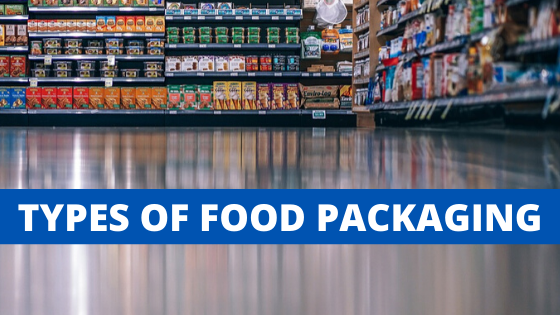
Food packaging is necessary for protecting contents from contamination, tampering and damage, and it also serves to determine portion sizes and display product information. Because the packaging needs for various types of food differ, many kinds of food packaging materials are available, including:
- Aseptic processing
- Bags
- Boxes
- Cans
- Cartons
- Flexible packaging
- Pallets
- Trays
- Wrappers
Aseptic Processing
Aseptic packaging is made of a paper and aluminum mixture with a layer of polyethylene. It’s used for foods that need to stay sterile, such as:
- Milk
- Drinkable products containing milk
- Liquid eggs
- Processed foods that require long periods of preservation time
Bags
Bags are made of a thin and usually plastic material to prevent the food from coming into contact with the air and environment. A number of food types can be bagged, including:
- Snacks, like chips and pretzels
- Fruit and vegetables, like apples and potatoes
Boxes
Boxes are one of the most common types of food packaging. They can be made with wood, corrugated fiberboard or metal, making them more resistant to damage. They’re commonly used for foods like:
- Cereal
- Frozen pizza
- Snack crackers
Cans
Cans are steel or thin metal containers coated with tin to prevent corrosion. They’re best at preserving food and protecting it from the light since the container is opaque. Cans are used for many foods, such as:
- Vegetables
- Fruit
- Soup
- Meats
- Gravy
Cartons
Cartons are made from corrugated cardboard and can be coated with plastic or paraffin for durability against moisture. They’re available in many food packaging styles, including:
- Egg cartons: These containers have egg-shaped molds that keep the egg protected during transport.
- Aseptic cartons: This variety has the carton material designed for aseptic properties. It’s used for drinks like juice and milk.
- Folding cartons: Folding cartons are made as flat cardboard pieces to be assembled by the food manufacturer.
- Gable-top cartons: This carton style has gables at the top that can be pinched and pulled to open. The design is popular for drinks like juice and milk.
Flexible Packaging
Flexible packaging is a non-rigid package that can take on any shape. Like bags, it protects the contents from the environment and extends their shelf life. An example of flexible packaging is bagged salad varieties.
Pallets
Pallets are used to transport large quantities of food containers. The products are usually shrink wrapped for extra security.
Trays
Trays are a flat, thick paperboard material with raised edges to keep the product in the container. They work well for foods like:
- Drinks
- Meat
- Plant seeds
Wrappers
Wrappers are thin plastic packaging that protects the food from the environment. They’re used for individual items, such as:
- Candy
- Granola bars
A Leading Manufacturer of Knives For The Food Packaging Industry
If you need durable knives that will cut through all varieties of food packaging, come to York Saw. We specialize in making industrial blades for the food processing and packaging industry to cut through foil, foam and boxes with ease.
Order your knives today by giving us a call at 1-800-233-1969.
Related Post:
Fish and Seafood Processing and Packaging Guide
Are Packaging Material Innovations Hurting Machine Knife Performance?

